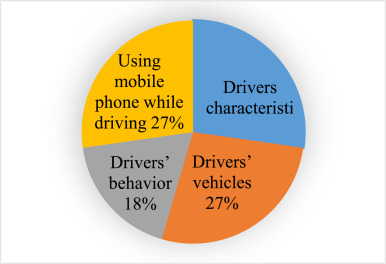

**The Influence of the Digital Era on Trends and Behaviors in Distracted Driving**
In the 21st century, the digital era has transformed how we connect, obtain information, and navigate our surroundings. While these advancements offer significant advantages, they have also posed new challenges—especially concerning road safety. A major concern is the increase in distracted driving, a trend that has markedly changed with the rise of smartphones, in-vehicle entertainment systems, and various other digital innovations.
### Grasping Distracted Driving
Distracted driving denotes any activity that diverts focus from the essential task of driving. This encompasses visual distractions (looking away from the road), manual distractions (removing hands from the steering wheel), and cognitive distractions (diverting mental focus from driving). Although distractions have always been present—like eating, tuning the radio, or talking with passengers—the digital era has brought forth more pervasive and engaging distractions, frequently merging all three categories.
### The Ascendance of Mobile Technology
The primary factor contributing to contemporary distracted driving is the smartphone. The National Highway Traffic Safety Administration (NHTSA) indicates that texting while driving represents one of the most serious distractions. Reading or sending a text diverts a driver’s gaze from the road for approximately five seconds—sufficient time to cover the distance of a football field at 55 mph.
Besides texting, smartphones present a plethora of distractions, such as social media, GPS navigation, music streaming services, and video content. The addictive nature of these platforms, spurred by notifications and real-time updates, compels drivers to check their devices, even when operating a vehicle.
### In-Vehicle Technology and Entertainment Systems
Contemporary cars are progressively fitted with sophisticated infotainment systems that combine navigation, communication, and entertainment functionalities. While these systems are intended to facilitate convenience, they can also lead to cognitive overload. Although voice-command features and touchscreens aim to minimize manual distractions, they often demand considerable mental attention and can shift focus away from driving tasks.
A study conducted by the AAA Foundation for Traffic Safety discovered that certain in-vehicle systems could distract drivers for up to 40 seconds during tasks like setting navigation or sending a text through voice commands. Such prolonged distractions significantly heighten the accident risk.
### Behavioral Patterns and Demographics
Research shows that younger drivers, especially those aged 16 to 24, are more inclined to partake in distracted driving behaviors. This group is generally more familiar with technology and heavily relies on mobile devices for communication and entertainment. However, distracted driving extends beyond the youth; individuals of all ages have exhibited risky behaviors, particularly as technology becomes more woven into everyday life.
Additionally, societal expectations and peer pressure influence behavior. In some instances, there exists a belief that multitasking while driving is acceptable or even essential to maintain connectivity. Such cultural acceptance can weaken public safety campaigns and law enforcement initiatives.
### Legal and Policy Actions
In reaction to the escalating concern of distracted driving, numerous regions have enacted laws that prohibit or limit the use of handheld devices while driving. By 2024, nearly all U.S. states have implemented some form of legislation concerning texting and driving, with many extending these regulations to include broader bans on handheld device usage.
However, enforcement continues to be a hurdle. Identifying distracted driving typically necessitates direct observation, and drivers may hide their actions. Furthermore, penalties differ greatly, and in certain areas, enforcement is not prioritized.
### Technological Innovations and Solutions
Interestingly, technology itself may present solutions to the dilemma it has largely caused. Several advancements aim to mitigate distracted driving, such as:
– **Do Not Disturb While Driving Features**: Many smartphones now possess functionalities that automatically mute notifications and provide auto-replies while the user is driving.
– **Driver Monitoring Technologies**: Advanced driver-assistance systems (ADAS) are capable of detecting signs of distraction or drowsiness and notifying the driver.
– **Usage-Based Insurance**: Some insurance providers give discounts to drivers utilizing apps or devices that track and restrict phone utilization while driving.
### Public Education and Awareness
Educational initiatives play a vital role in addressing distracted driving. Organizations like the NHTSA, AAA, and nonprofits such as EndDD (End Distracted Driving) strive to raise awareness through public service campaigns, school programs, and community outreach efforts. These initiatives aim to modify cultural perspectives and highlight the risks associated with distracted driving.
### Conclusion
The digital era has reshaped contemporary life, delivering unparalleled convenience and connectivity. Nonetheless, it has also introduced new hazards, particularly on the road. Distracted driving, driven by mobile devices and in-vehicle technology, presents a considerable risk to public safety. Tackling this issue necessitates a comprehensive approach that incorporates legislation, enforcement, technological advancements, and changes in cultural attitudes. As society continues to adopt digital tools, it is crucial to strike a balance between connectivity and responsibility—especially when lives are at stake.






